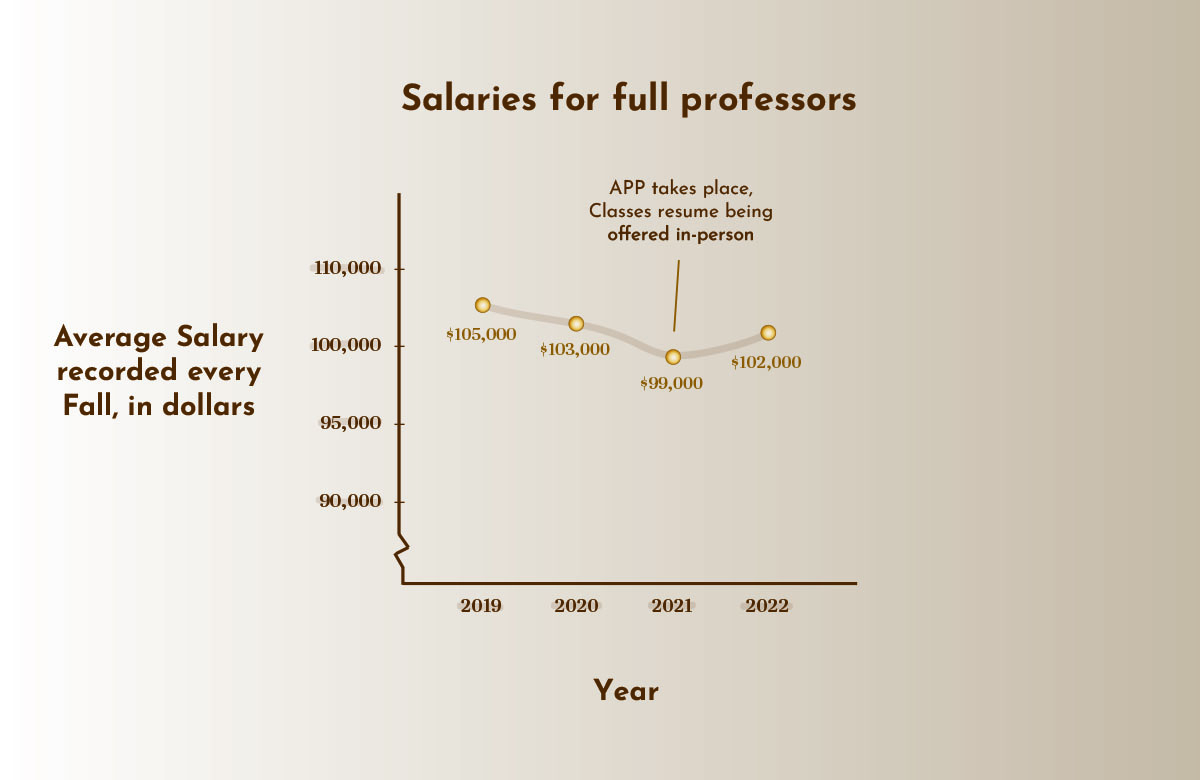While a warmer forecast seems desirable amid this week’s frigid temperatures, an international group of more than a thousand scientists says it’s anything but pleasing.

Global warming is “unequivocal,” according to a report released Friday by the United Nation’s Intergovernmental Panel on Climate Change, which cites greenhouse gases created by human action as almost positively — with more than 90 percent certainty — the leading cause.
While it is impossible to prevent the earth from enduring centuries of higher temperatures, rising seas and less-stable weather patterns, a rapid reduction of greenhouse-gas pollution can stunt the climate change effects, the report said.
The earth’s average temperature is likely to rise between 2 and 11.5 degrees Fahrenheit by the end of the century, the report said, causing significant ecological and agricultural damage. While ocean levels rose between 6 to 9 inches last century, they are expected to rise between 7 to 23 inches during the next 100 years.
Scientists at Ithaca College and Cornell University agree that the IPCC report, though conservative in nature, did a solid job outlining its findings and conveying the potential consequences of human-influenced climate change.
David Wolfe, professor of horticulture at Cornell University, studies how climate change impacts ecosystems. He said his scientific colleagues on East Hill and across the globe are trained to be inherently skeptical, but “it’s hard to imagine anybody with a strong background in the sciences not becoming fairly convinced of the data at this point.”
It’s difficult to reach a consensus among so many scientists with different views, Jason Hamilton, assistant professor of biology at the college, said of the IPCC’s findings. Though he said the report is what it should be, Hamilton believes the problems of global warming are even more consequential than the IPCC warns.
“There is essentially no credible scientist that thinks that global warming isn’t happening or is overblown,” Hamilton said. “The number of people in the world that really study these issues in a way to be able to have an opinion is in the thousands — 2,000, 3,000 — that kind of number. The number of scientists that think there aren’t any issues with global warming is five.”
Effects of global warming can be seen in upstate New York, and coming years will bring more extreme temperatures and less-stable weather patterns to the area, Hamilton said.
Through his own research of regional plant life, Wolfe has documented earlier bloom dates for plants like apple trees, grape vines and lilac bushes. Exterminators are having to put out traps and pesticides on farms earlier in the year as insect pests show up earlier and in bigger numbers.
“We are already seeing in our own region some evidence that it’s not just the thermometers that are telling us it’s warming in our area,” Wolfe said. “It’s actually the living world that is responding.”
As there become fewer days with snow on the ground in the Northeastern United States, nutrient production cycles will be damaged, Wolfe said.
“Not having that blanket of snow on the ground during the winter, which has an insulating property on the soil, affects a whole ecosystem below ground in the soil,” he said.
Beyond the environmental impacts of climate change, economies across the globe will have to adapt. For example, Wolfe said, local industries that revolve around snow, like skiing and salt mining, will have to rethink their business models.
Though the negative impacts of global warming, like the rising of sea levels, will likely outweigh the advantages of a warmer climate, some economies may actually benefit from climate change, said William Kolberg, chair of the economics department at Ithaca College.
“There’s a mixed bag here,” Kolberg said. “There are going to be changes, there are some problems, but there’s also going to be some benefits that are going to be thrown into the mix.”
If regions like California are unable to grow grapes to make wine because of higher temperatures, then other areas across the globe will most likely be able to take their place, Kolberg said.
“In regions that are currently suffering because it’s cold most of the time, if those regions become warmer then a lot of new beneficial things can happen there, I’d imagine,” he said. “That really ought to be included along with the list of real major problems. I don’t think we know an awful lot about this. If it continues, are we in grave danger, or is it just going to be sort of a problem?”
Kolberg teaches an environmental economics course. Part of the semester is spent looking at all of the natural resources used by the economy like fossil fuels, trees and water. The other part of the course examines what the economy is dumping into the environment in terms of water and air pollution.
“In both cases, we use the benefit-cost framework to analyze all of these issues,” Kolberg said. “How much conservation is enough? How much pollution is too much?”
Kolberg said he does not dismiss global warming as a problem, but the long-term impacts of climate change may be more complex than it seems.
Wolfe said there is a need for major new technologies like bio fuel, wind and solar power, and ocean turbines that use water currents as new sources of energy to power the planet.
But while climate change is being discussed on a global level, local action is just as important, said Bill Burtis, spokesperson for Clean Air–Cool Planet, an organization that helps colleges, towns and cities in the Northeast develop plans to reduce greenhouse-gas production.
On South Hill, organizations like the Ithaca College Environmental Society, Students for Sustainability and the CNS Sustainability Workgroup are working to promote recycling programs and on-campus reduction of energy use. The college has also planned for the new business school to be completely sustainable and is looking into building a wind turbine on campus as an alternative energy source.
Founded three years ago by members of the local community, Sustainable Tompkins has been studying ways that individuals, families and businesses can become more environmentally friendly. The group is working with urban planners to find ways to construct sustainable buildings, with the public transit officials to develop buses that run on alternative fuels and with the chamber of commerce to make it easier for business to go green, said Marian Brown, the organization’s treasurer and special assistant to the provost at the college.
“Action needs to be fast, and it needs to be broad-based,” Brown said. “It needs to be wholly adopted by individuals, through small businesses, through large organizations, through entire municipal and governmental structures if this is going to work,” Brown said.
A history of global warming warnings
1896
The greenhouse
effect is first described by Swedish scientist Svante Arrhenius, who said the burning of fossil fuels increased carbon dioxide in the atmosphere.
1913
A correlation between solar activity and weather patterns is discovered by Charles Abbot, a scientist with the Smithsonian Astrophysical Observatory.
1956
Military researcher Gilbert Plass says that human activity could raise the average global temperature by 1.1 degrees Celsius per century.
1971
Scientists discover climate changes occur on Mars when a dust storm traps fragments in the atmosphere and warms the planet by tens of degrees Celsius.
1979
Ecological changes like deforestation are first recognized as triggers for climate change at the First World Climate Conference sponsored by the World Meteorological Association.
1988
The Intergovernmental Panel on Climate Change is founded by the United Nations. The concentration of carbon dioxide in the atmosphere reaches 350 parts per million.
1990
The IPCC puts out its first report, which states that human activities are increasing the amount of greenhouse gases in the atmosphere.
1992
More than 100 countries, including the U.S., sign the United Nations Framework Convention on Climate Change, recognizing global climate is shared by all.
1997
The U.S. is one of the nations to sign the Kyoto Protocol treaty, an agreement to reduce greenhouse gas emissions by 5.2 percent. It is not ratified by the U.S. Senate.
2001
A report by the U.S. National Academy of Sciences states global temperatures are rising and
humans are the likely reason.
2005
The Kyoto Protocol, ratified by more than 140 countries, is put into effect — though not by the United States.
2007
The IPCC issues its fourth report, claiming with near certainty for the first time that greenhouse gases, like carbon dioxide from human activity, are the main causes.






